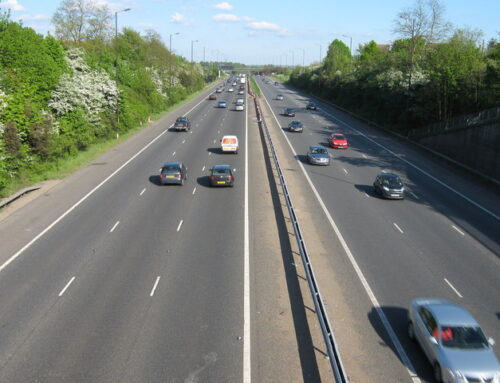Prior to Christmas 2024, a new report was published by the Department of Health and Social Care (DHSC).
The annual report – for which England’s Chief Medical Officer (CMO), Sir Chris Whitty, was the author – looked at the health of the UK’s largest cities, and considered some of the specific health challenges these highly urbanised areas present.
Of particular interest to many transport consultants and their clients, however, will be the spotlight the CMO placed in his report on the role of transport in improving health outcomes.
How crucial a part does transport play as an enabler of health?
The CMO’s publication highlighted the power that cities can have in helping to optimise the health of their residents. Such localities provide an environment that can lend itself to greater levels of active travel for brief journeys.
In the words of the report: “Cities should be ideal places for enabling active travel with shorter distances to the things we need or want on a regular basis, including supermarkets, places of leisure, work, or healthcare.”
The document continued: “Making walking and cycling more practical and safer, and access to green space easier and more equitable, would go a long way toward removing barriers to improving physical activity levels, and could significantly improve the health of England’s increasingly urban population.”
What can transport planners do to promote better health among city residents?
Highlighted by the UK Government report was the courses of action that transport planning professionals could take to assist those living in cities to improve their health.
The publication called for public spaces, green areas, and the promotion of healthy travel options like walking, cycling, and public transport, to be prioritised in urban planning.
The report suggested such measures as low-traffic neighbourhoods, “superblocks”, 15-minute cities, and car-free cities, in addition to enhancements to green spaces and transportation for commuting.
Mention was also made in the CMO’s report of the importance of accessible public spaces, with it being observed that “poorly maintained pavements, potholes, and uncleared leaves make active travel difficult”, especially for older or disabled people.
In its commentary on the DHSC report, the Chartered Institution of Highways & Transportation (CIHT) said this element of the publication echoed “calls” it had also made.
The charity drew attention to a report it had recently published on how public spaces can be designed with a focus on inclusivity and accessibility, entitled Creating a public realm for all.
Air pollution is another major concern when it comes to health in cities
The health of people in cities is inevitably impacted by air pollution in their local environment. The specific modes and levels of transport in a given city can greatly shape this.
The CMO’s report said that efforts to drive down air pollution would necessitate action “specific to cities”.
The document underscored the importance of encouraging higher levels of active travel, stating that “reducing private vehicle journeys and car dependency by increasing active travel reduces air and noise pollution and levels of carbon emissions in cities.”
Our leading transport consultants at Transport Planning Associates (TPA) stand ready to provide guidance and expertise to aid your efforts to realise success with your projects. To learn more, please don’t hesitate to contact your closest TPA office.





